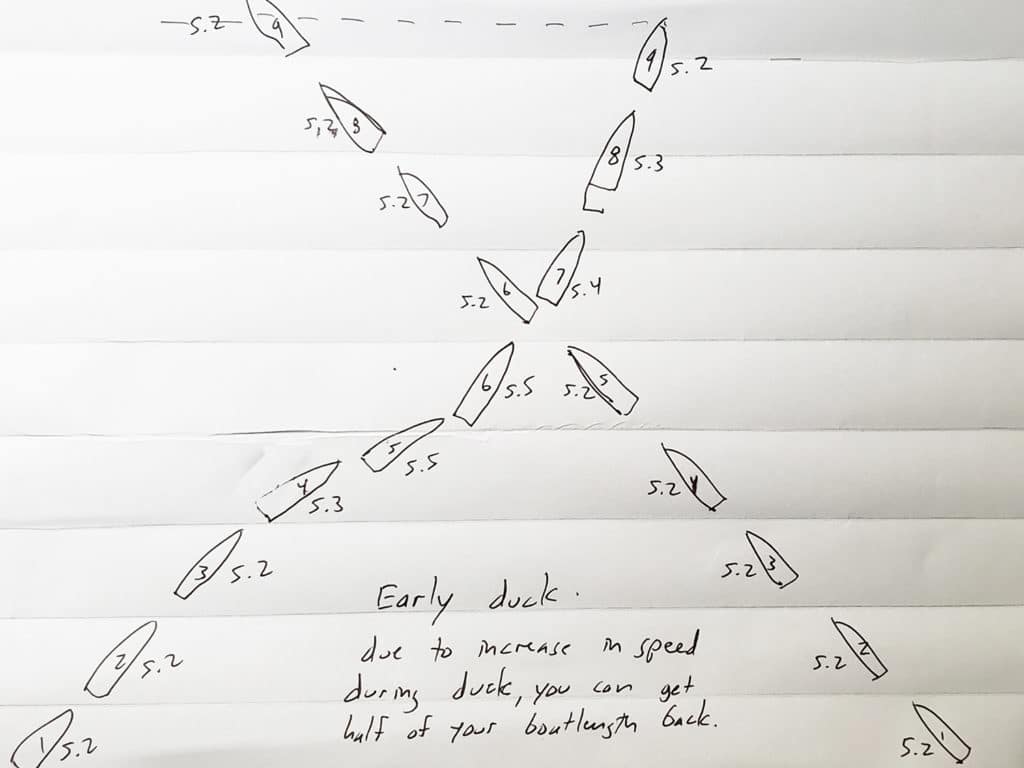
Have you ever been on port and started ducking a starboard tack boat only to have them tack in front and to leeward of you and then pinch you off moments later? Or done a last second duck only to roll right into a tack afterward, resulting in you ending up right behind the boat you just ducked and in their bad air rather then tight to weather? Here are two types of ducks and when they work best.
The “perfect duck” starts with bearing away, gaining speed and then timing it so you head up and hit closehauled just as you pass the starboard boat’s stern. With this, not only are you above target speed, but you can take advantage of the slight momentary lift you get as you pass behind the other boat. This is great for speed and eventually VMG, but the downside is that it requires an early show of your intentions. That could be bad if the starboard boat intends to lee bow you and lead you back on port.
The second duck is a “last-minute duck” where you wait as long as possible and then bear away heavily to duck. Because you are already into a big duck, the starboard boat would likely foul you if they tack, so they generally continue on starboard, looking for the next victim. You generally don’t gain much speed due to the severity of the turn, and you are usually not close hauled as you pass their stern, so it can be a bit of a VMG loss. But at least you can continue on port without the competitor in front of you.
When would you use these two options? If you are on port approaching a boat on starboard layline, you can be sure that the other boat will not tack. This is a perfect time for the perfect duck. You end up tacking very close behind the starboard boat with a nice arc, giving you great speed and VMG.
Another time for the perfect duck is if the starboard boat has just tacked onto starboard. A boat that has just tacked is quite unlikely to tack back onto port right away as two back-to-back tacks are generally very slow due to the time it takes to accelerate after tacks.
Last-minute ducks seem to happen more frequently. If you are on or close to the port layline, the starboard boat will want to lead you back on port. Or, if you are in a beautiful lane headed to more wind on a lift, the starboard boat probably wants your spot. A last minute duck will often freeze them and they will be forced to go behind you.
No one likes to pass behind another boat, but if you have little choice but to duck or feel it’s important to continue the way you are going, it’s important that you know your options. Each has its advantage, and making sure you’re using the right type of duck at the right time will make the situation much more appealing.









